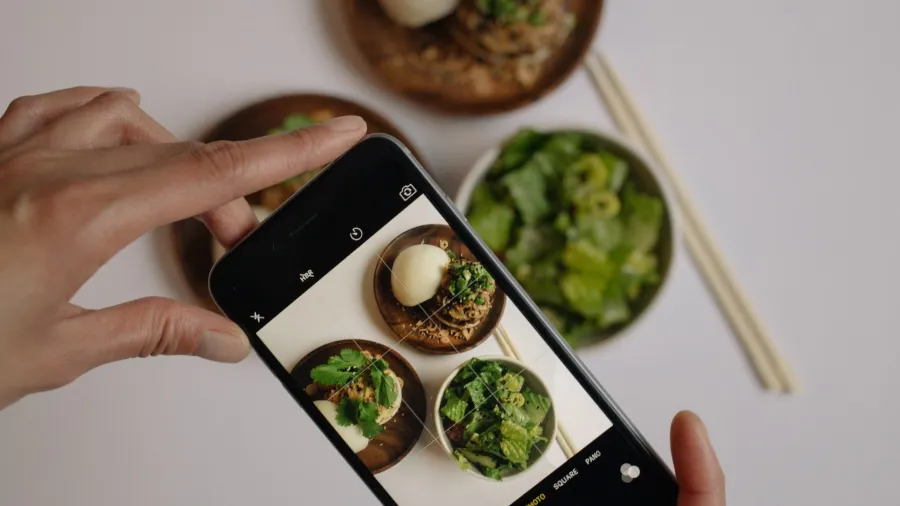
Online engagement: the secret sauce of today’s successful QSRs
Learn how you can bring your online presence to new heights.
Food is now more online than ever. With the ubiquity of smartphones and other mobile devices, customers can now order their favorite dishes with just a few clicks. And with the pandemic pushing delivery to the forefront, it's no surprise that the online food delivery market is expected to grow to $220 billion by 2025 or 40% of total sales.
However, while this increase in online ordering has been a boon for many restaurants, it has also created a new set of challenges. In particular, it can be difficult to stand out from the crowd and get potential customers to notice your restaurant.
If you're a quick service restaurant (QSR) looking to boost your online presence, the myriad of online marketing options can be daunting. From search engine optimization (SEO) to online marketplaces, there are a lot of potential strategies to consider.
To help you get started, here are a few tips on how to increase your QSR's visibility online.
1. Use SEO to your advantage.
One of the best ways to make sure potential customers can find your restaurant is to optimise your website and social media for search engines. This means using relevant keywords in your site's content and making sure your site is easy to navigate.
From your brand name to your menu items, ensure you're tagging your restaurant in the proper categories. And keep your menus simple - customers should be able to find what they're looking for quickly and easily.
For example, if you're a pizza place, you'll want to make sure you show up when people search for "pizza near me." But you'll also want to be sure you're using other relevant keywords, like "thin crust pizza" or "vegan pizza."
And when you're optimising for social media, you'll want to increase the quality and quantity of your content. Posting regular updates, photos, and videos will help you stay top of mind with potential customers.
2. Increase your presence on available channels.
In addition to your website, there are a number of other online channels where you can list your restaurant. Platforms like Uber Eats, Door Dash, and Menulog are all popular food delivery apps that can help you reach a wider audience.
Creating profiles on these platforms is usually free and only takes a few minutes. Make sure your listings are accurate and up-to-date and include plenty of photos and relevant information. These profiles can be a great way to attract new customers, so it's worth taking the time to create quality listings.
Platforms like Deliverect Online Ordering also allow you to create your own online store, which can be a great way to increase your reach and your sales. Not only will you be able to take orders directly from customers, but you'll also have more control over your branding and marketing. These platforms typically charge a smaller commission on each order, so they can be a great way to generate additional revenue.
If you have more than one brand, then you can expect exponential results. Some QSRs and food brands began experimenting with virtual or ghost kitchens over the pandemic, and the results have been promising.
A ghost kitchen is a delivery-only restaurant that doesn't have a physical space for customers to dine-in. This can be a great option if you're looking to expand your reach without the overhead costs of a brick-and-mortar location.
3. Rank higher on online marketplaces.
It's not enough to join an online marketplace, you also need to make sure you're ranking high in the search results. Online marketplaces are often crowded with restaurants, so it's important to do everything you can to make your listing stand out.
Ranking higher on these marketplaces requires understanding and utilising algorithms. Some platforms rank brands higher that have lower acceptance times as well as error rates. This means that it's important to optimise your cooking prep times to 8-10 minutes, so that delivery can happen within 30 minutes.
Other platforms take into account menu management, pricing and promos when ranking brands. Many restaurant owners use menu management tools like Deliverect's Menu Builder to help them manage their menus across multiple platforms and marketplaces. This can be a great way to save time and ensure your menus are always accurate, with stock levels that are updated in real-time on all delivery platforms simultaneously.
Finally, ratings and reviews are important across all online marketplaces. Make sure you're actively encouraging customers to leave feedback so that potential customers can see that your restaurant is reputable.
Partner with Deliverect: a reliable end-to-end platform
QSRs are probably the busiest of all restaurant types, which is why it's so important to partner with an end-to-end platform that can take care of the little but extremely important details. As dynamic as the restaurant industry is, a QSR's online presence should be even more so.
Deliverect's all-in-one platform can help you manage your multiple sales channels, connect to various marketplaces, and optimize your menu for each delivery service. With Deliverect, you can also track your online orders in real time, so you can be confident that each delivery is on time and accurate.
What's more, Deliverect's platform integrates seamlessly with the most popular point-of-sale systems, so you can manage your front and back of house with one tool. And if you don't have a POS, no problem – the Deliverect app consolidates all your sales channels so you can run your entire business from one place.
If you're looking to scale your QSR, then Deliverect can help you grow your business while freeing up your time to focus on what you do best: cooking great food.

























